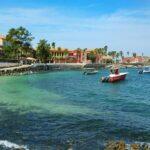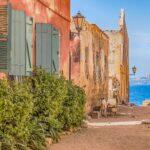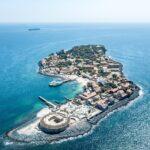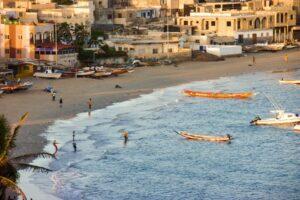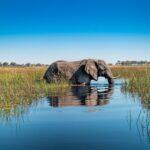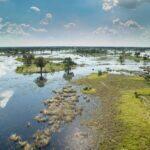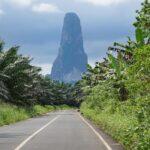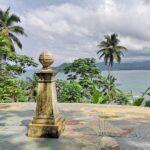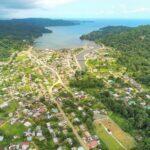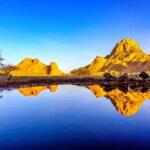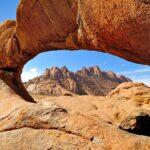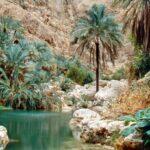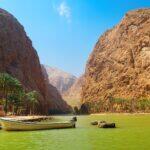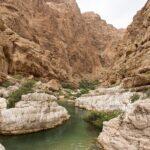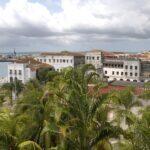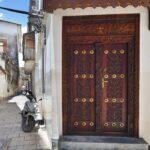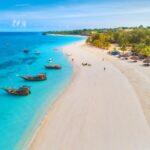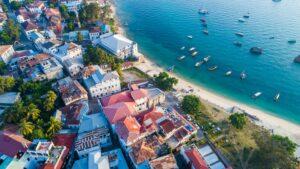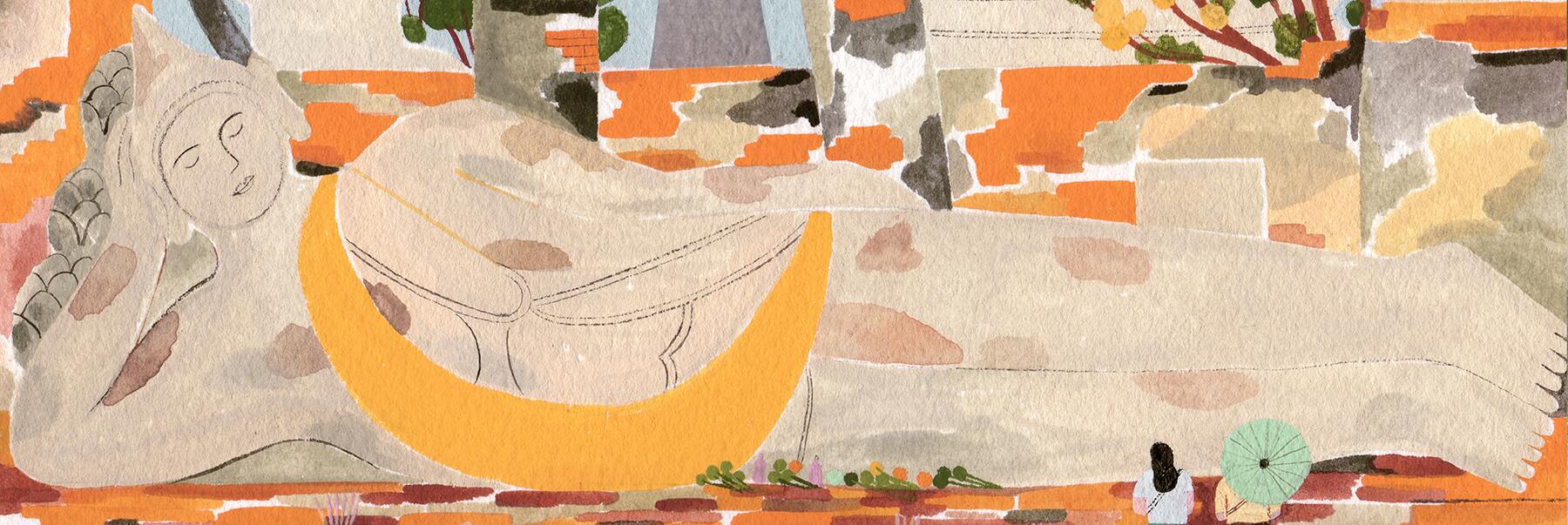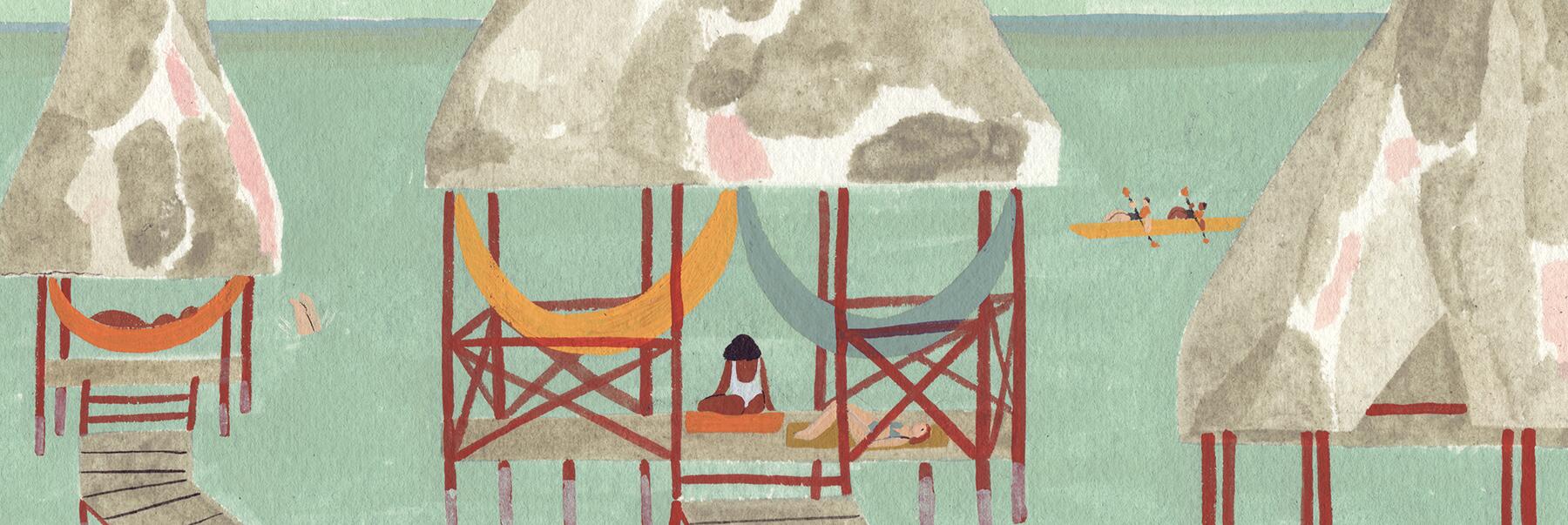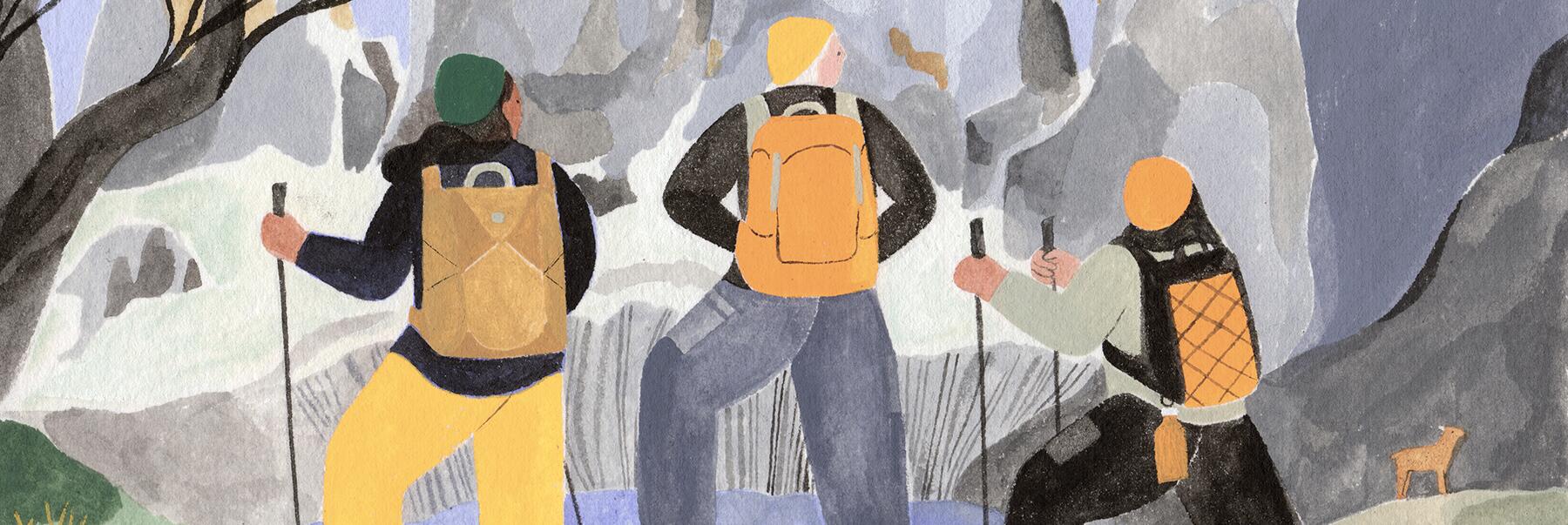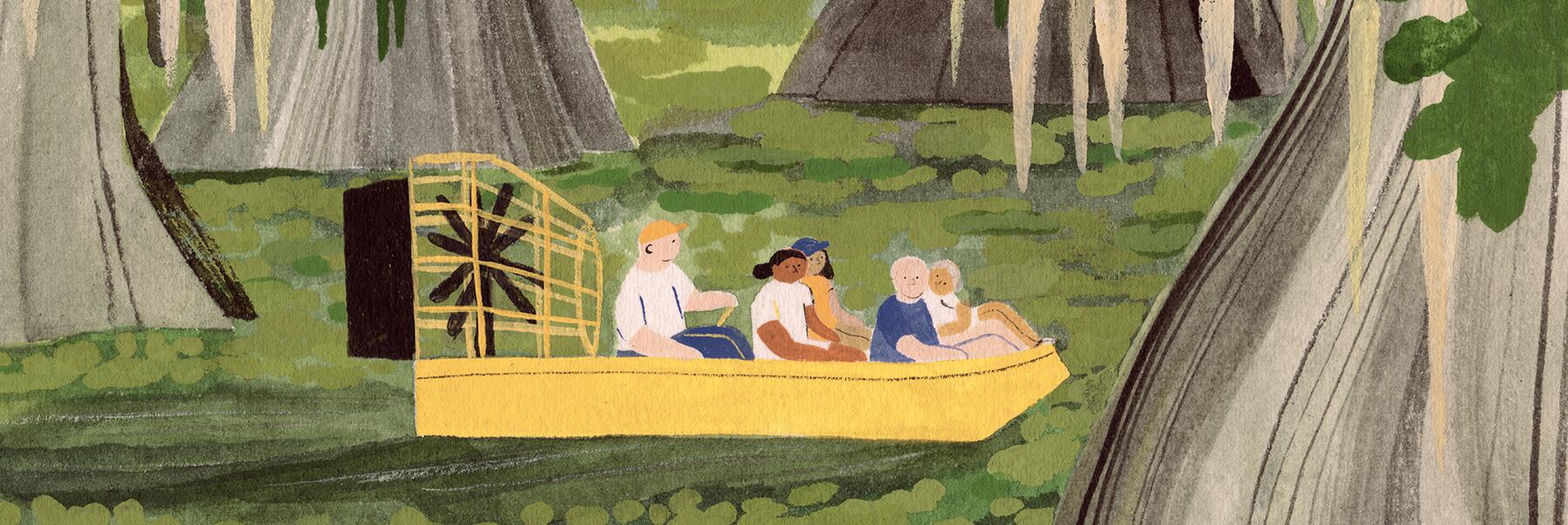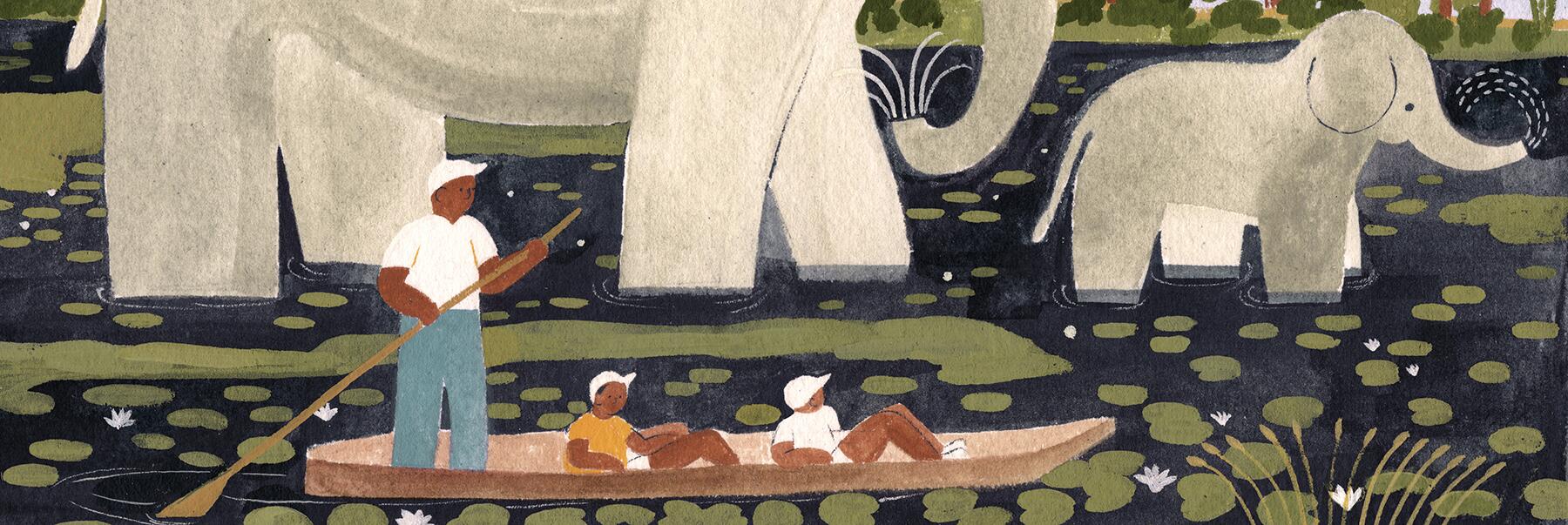
Africa & the Middle East
Africa & the Middle East
Top places to go in Africa & the Middle East in 2023
Expand Full List
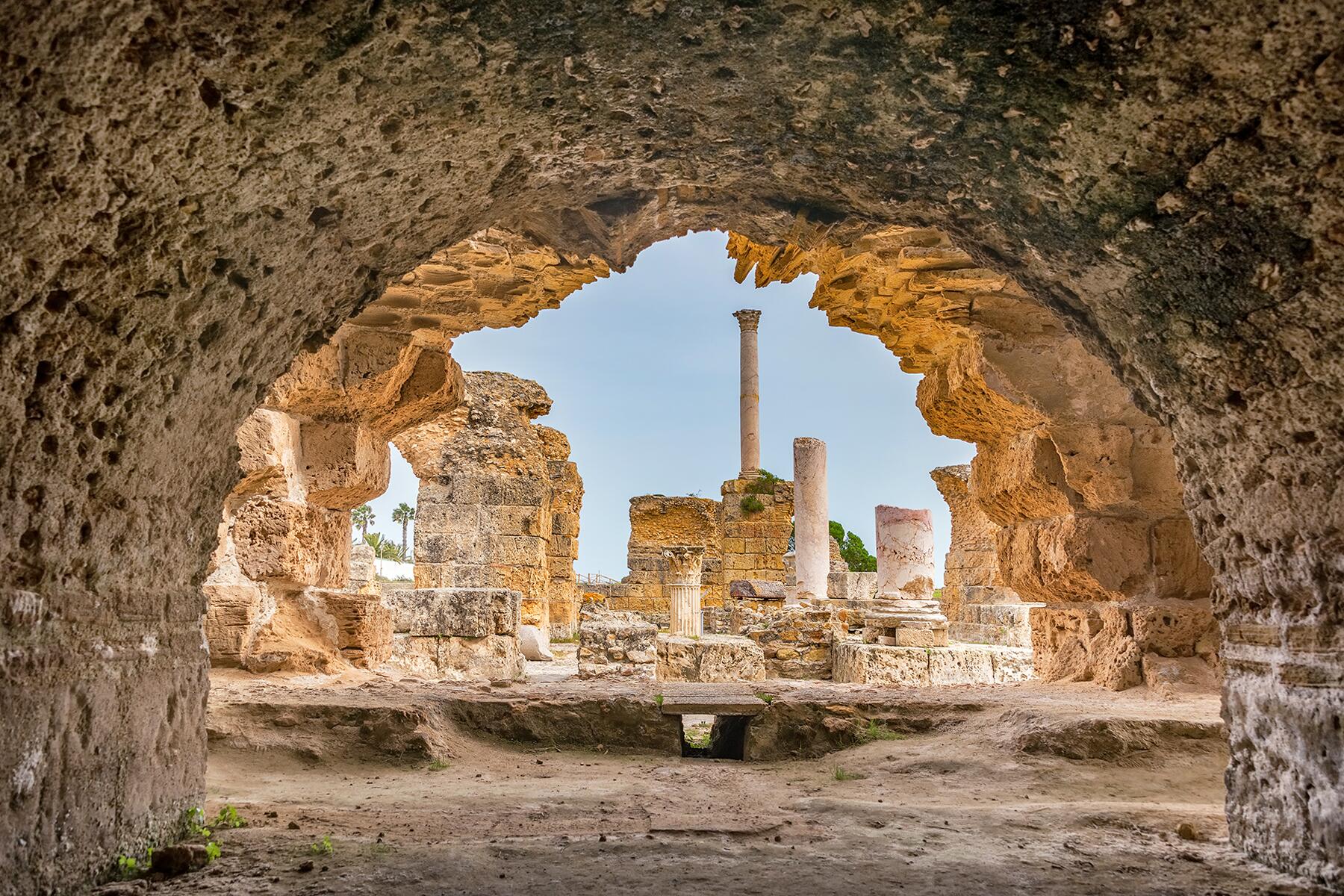
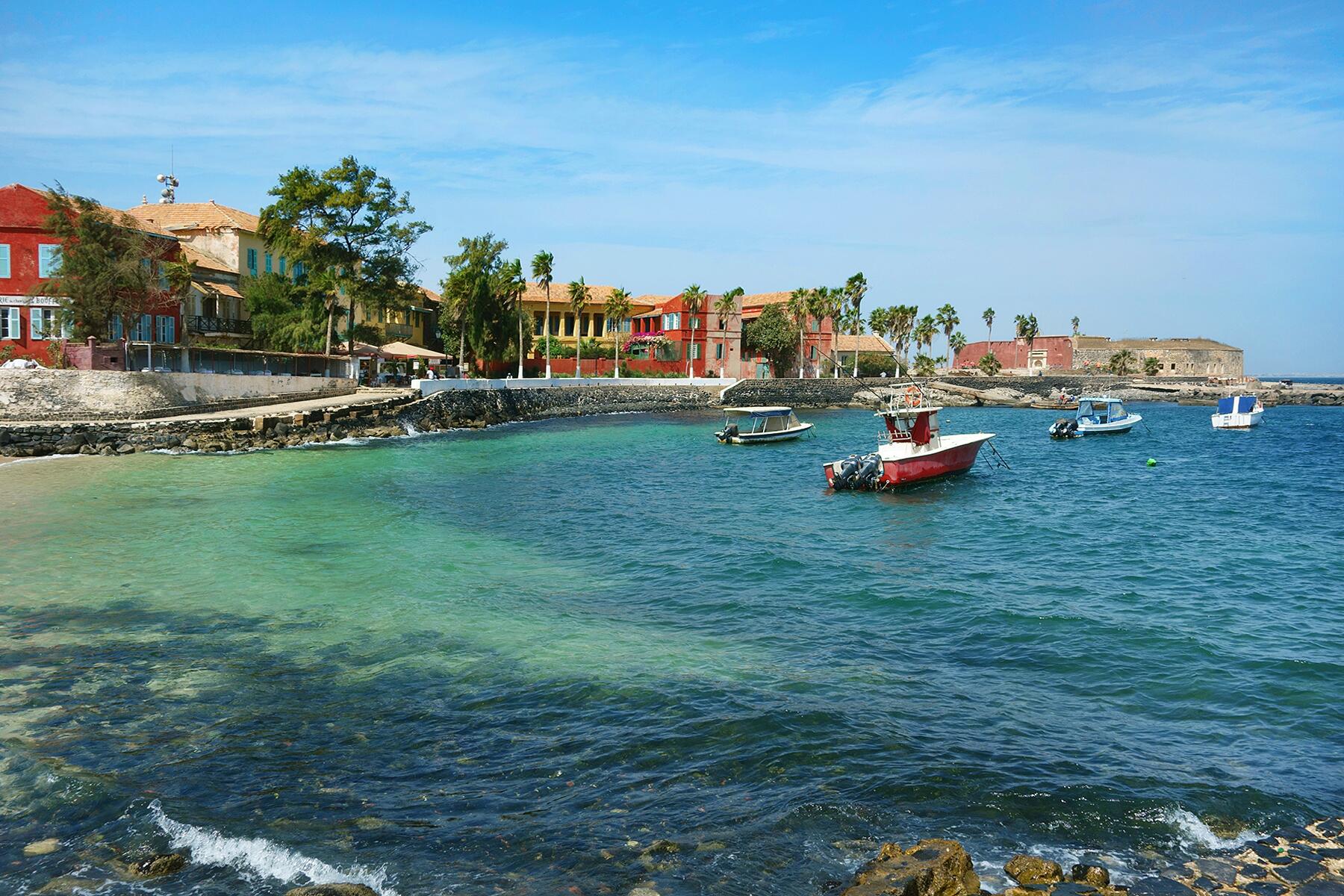
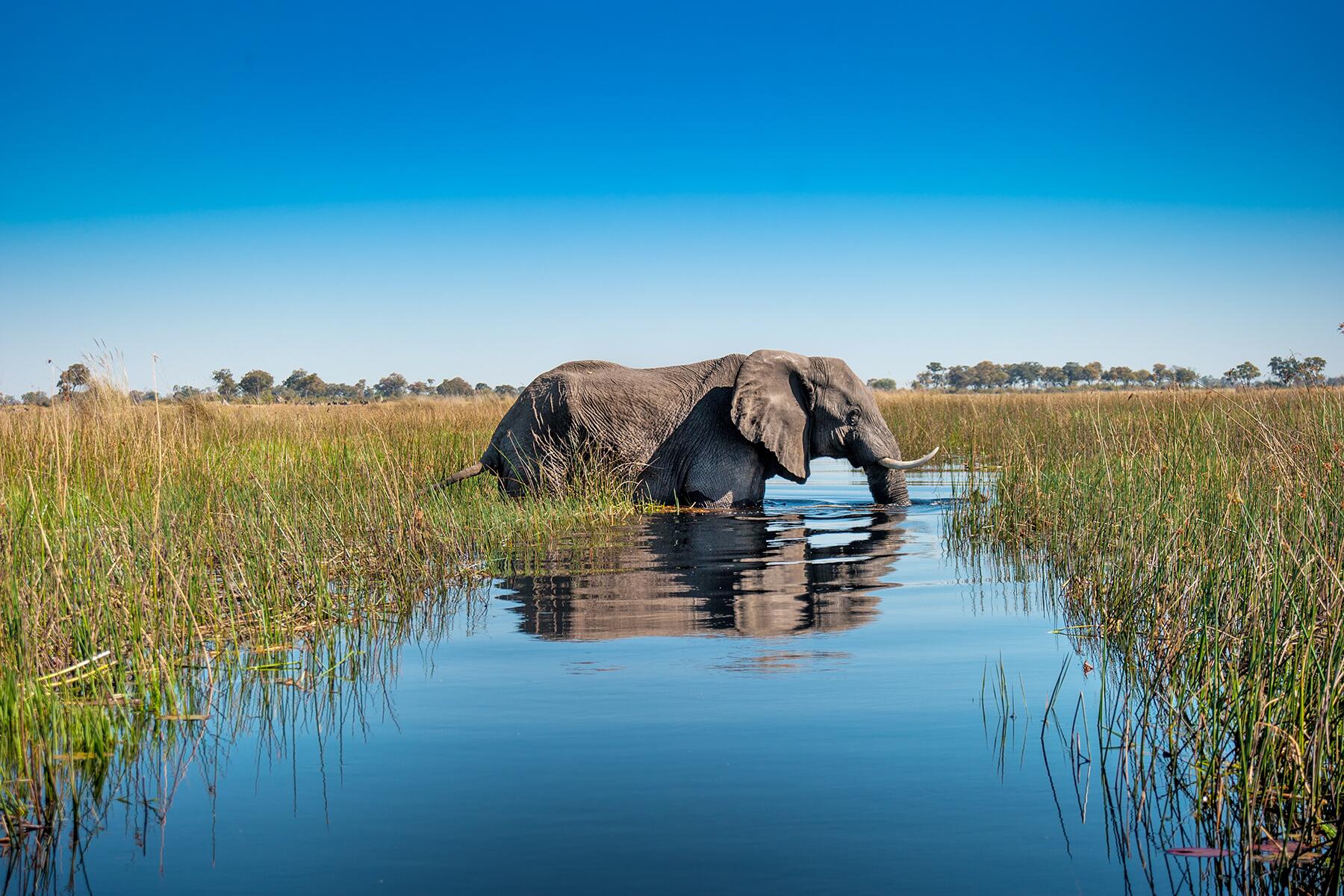

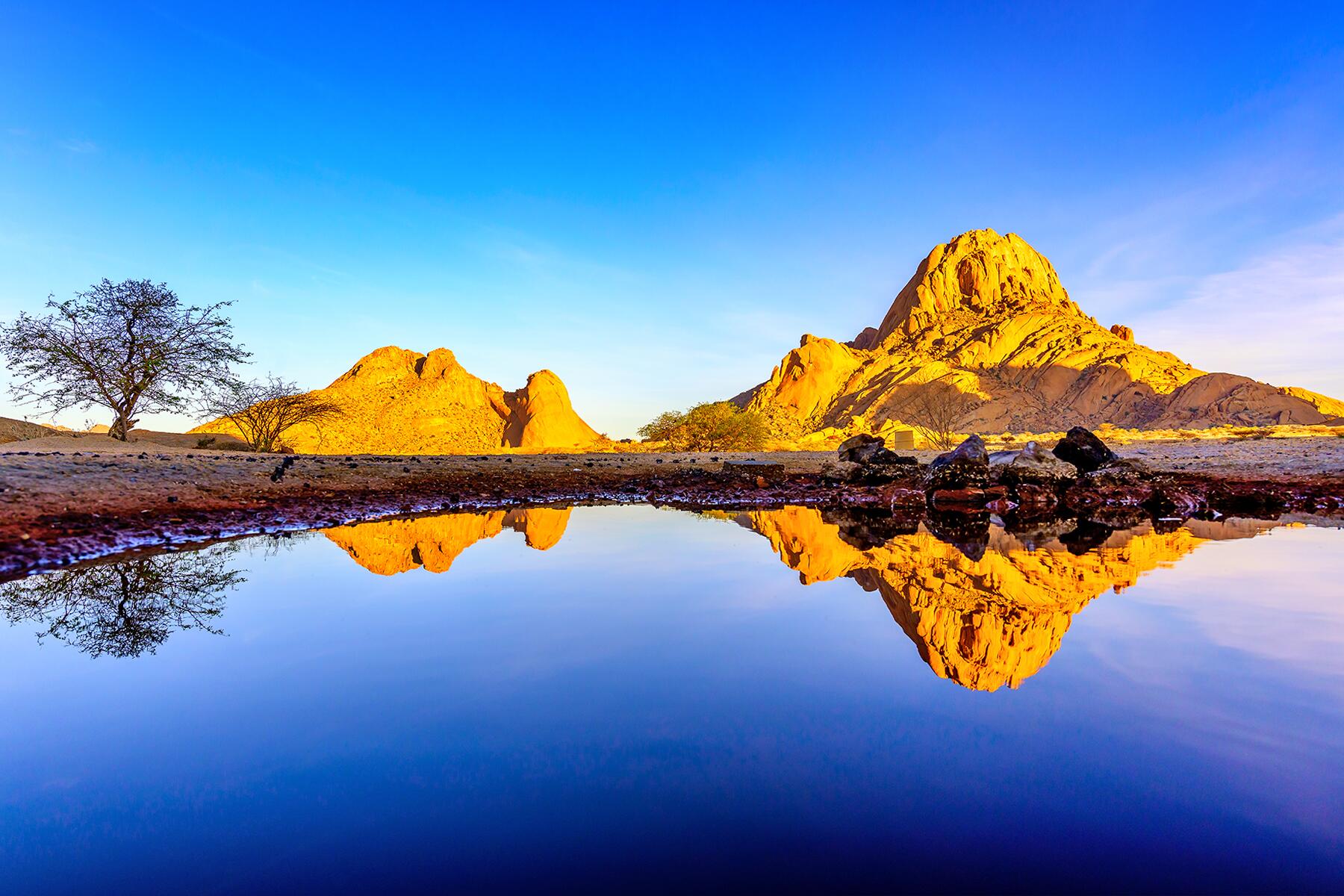
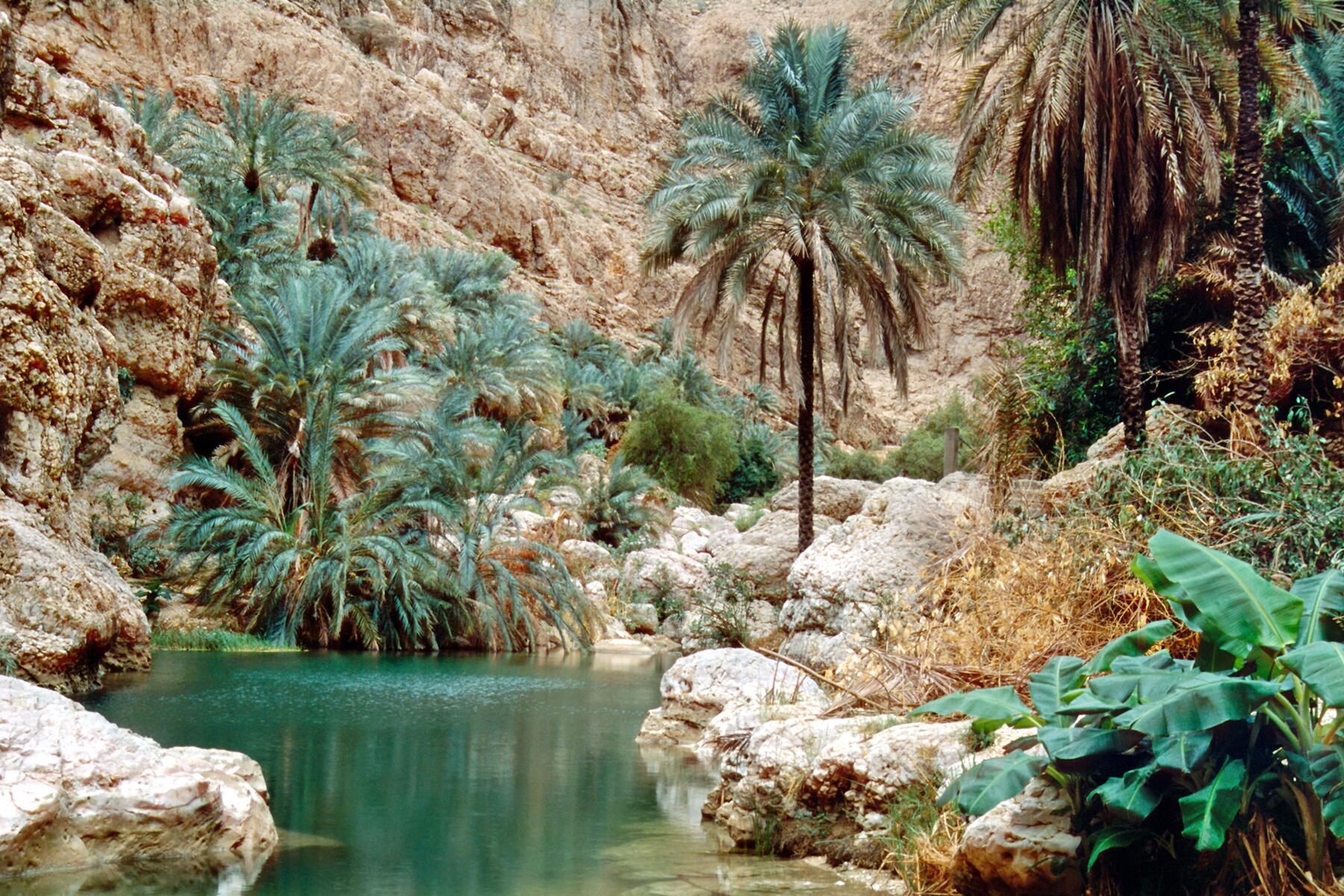
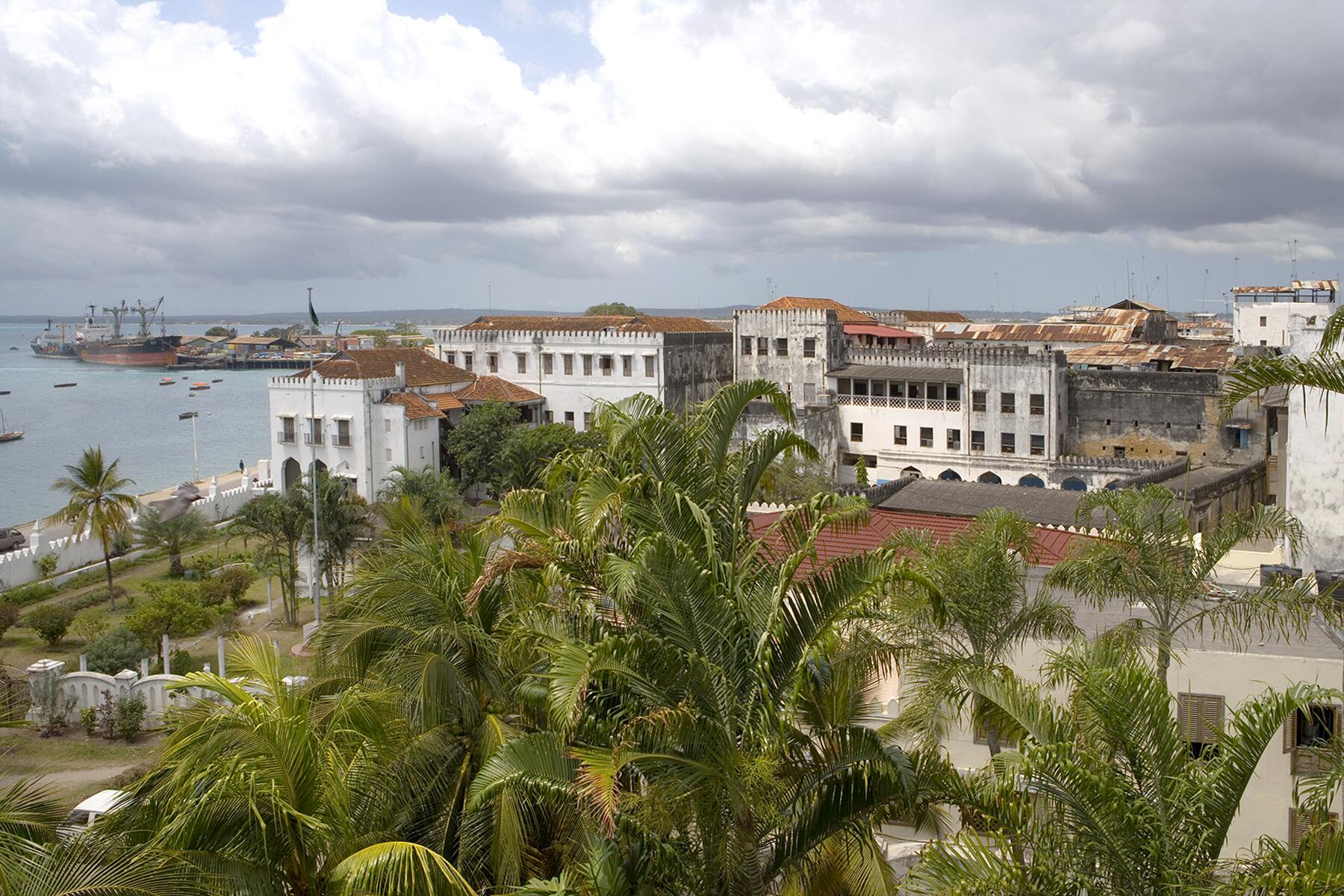
-
Carthage, Tunisia
![]()
-
Gorée, Senegal
![]()
-
The Okavango Delta, The Okavango Delta
![]()
-
São Tomé and Príncipe
![]()
-
Spitzkoppe, Namibia
![]()
-
Wadi Shab, Oman
![]()
-
Zanzibar, Tanzania
![]()

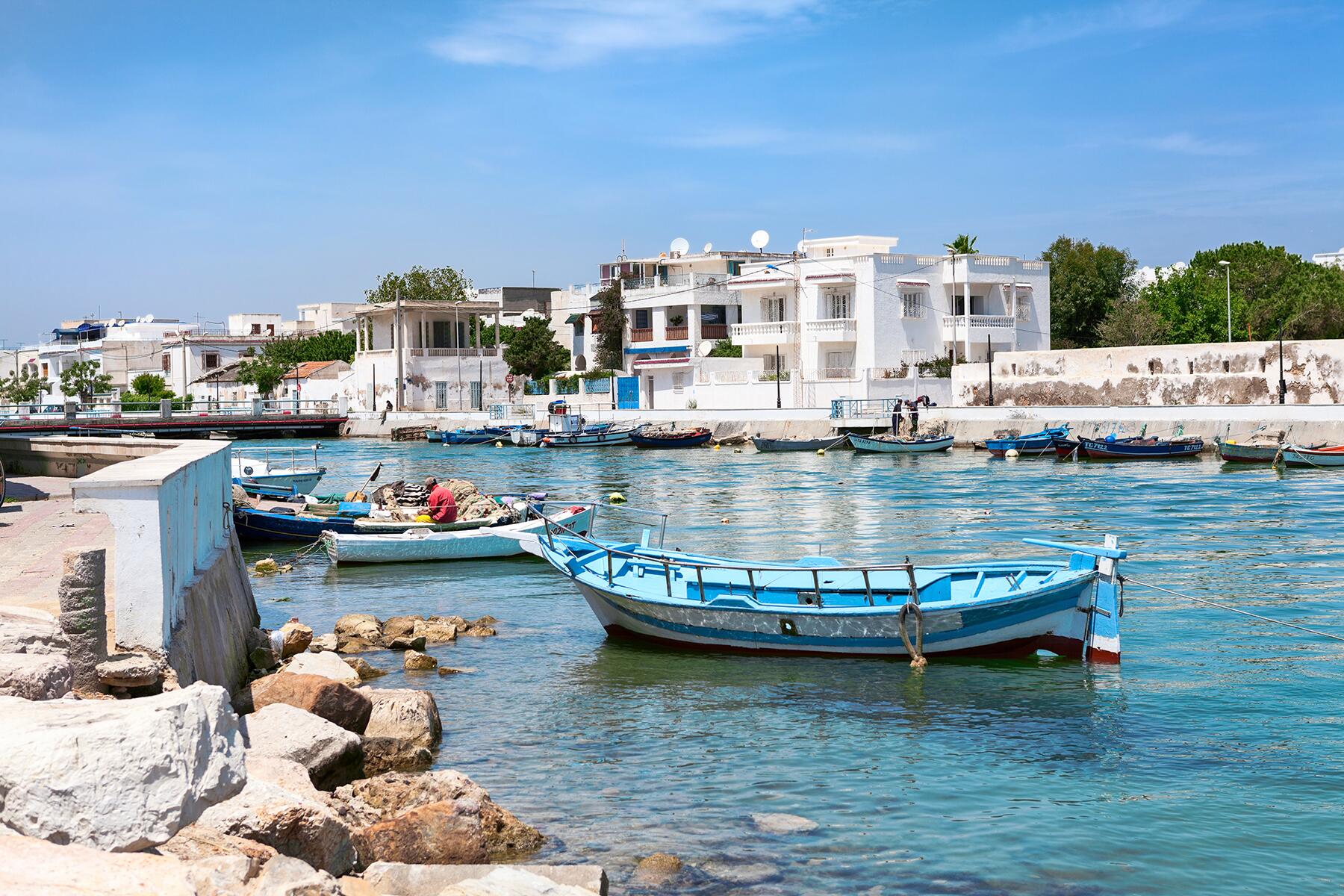
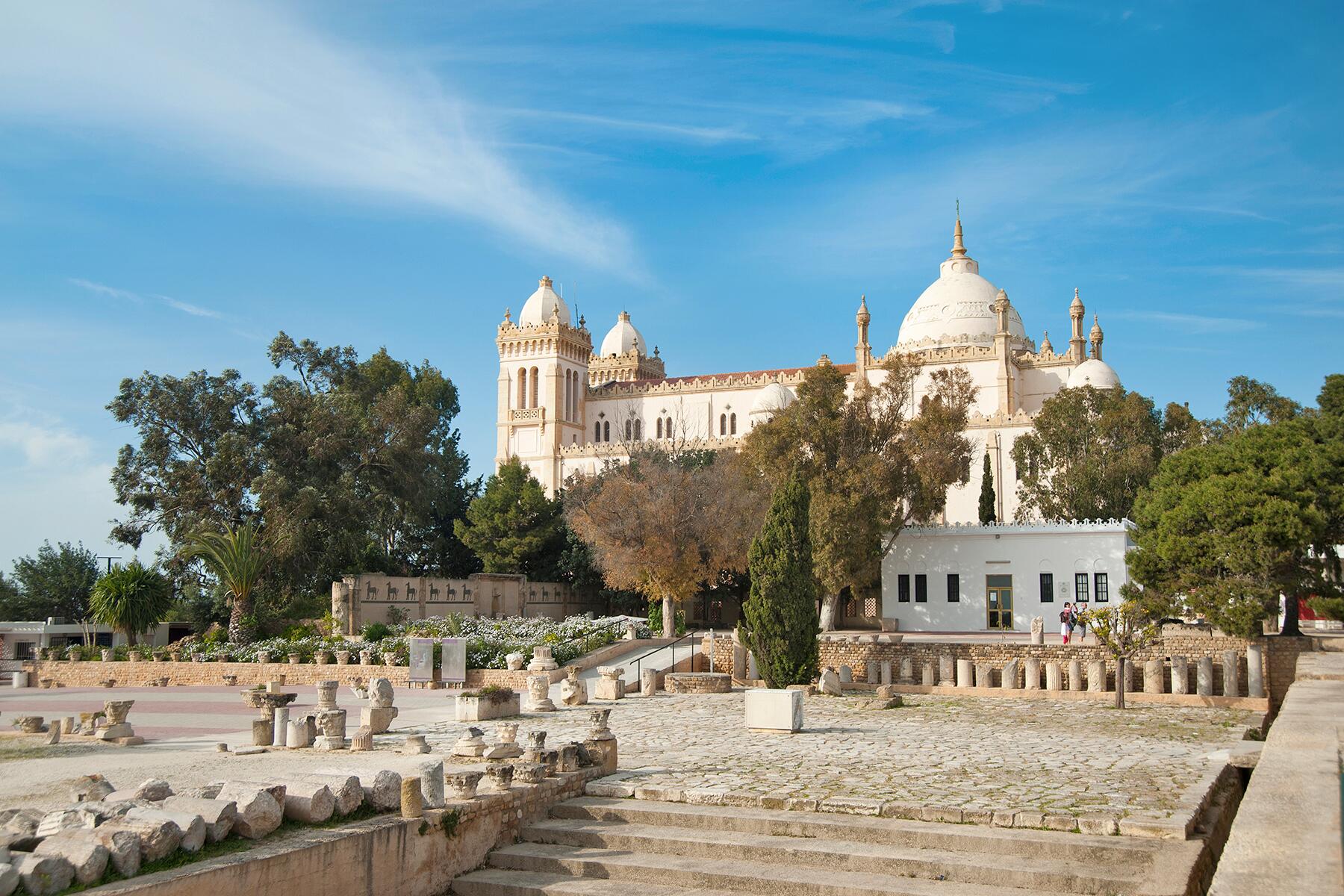
Carthage
Tunisia
The “new and now” is not why Carthage comes highly recommended—quite the contrary, in fact. Located on the outskirts of Tunisia’s capital, Tunis, the seaside enclave was once the richest and most powerful city in the Mediterranean region due to its standing as the center of the Phoenician trade network. A series of wars that spanned almost 100 years, however, led to its destruction and paved the way for the expansion of the Roman Empire. It’s no wonder, then, that the Archaeological Site of Carthage was inscribed as a UNESCO World Heritage Site in 1979.
Today, history buffs flock to this coastal town to catch a glimpse of the past at the Antonine Baths (an ancient bath complex), La Malga Cisterns (built by the Romans to store water), and Sanctuary of Tophet (a former sacrificial site and burial ground). Bear in mind that these ruins are spread out, so a guided tour will ease the logistics of exploration. Incidentally, Tunisia’s culture scene is rich and diverse, so make a pit stop at Fahrenheit 451 to purchase a couple of meaningful souvenirs—think: handcrafted jewelry, works of ceramic art, and plenty of books on Carthage.
The stylish likes of Dar El Kif and Dar Corniche may tempt you to stay in the nearby coastal town of La Marsa. Having said that, the five-star Villa Didon in Carthage wins rave reviews owing to its onsite hammam, proximity to key attractions, and sweeping views over the Gulf of Tunis. More affordable—and arguably more charming—is Carthage Hill, a guesthouse with six uniquely designed rooms and a sizable garden where you’ll want to linger.
Like most destinations along the Mediterranean Sea, a trip during spring (March-May) or early fall (September-October) will spare you from both scorching temperatures and crowds of tourists.
Insider Tip
A stay in Carthage makes for the perfect opportunity to visit its famously blue neighbor, Sidi Bou Said; in fact, most half-day guided tours that depart from Tunis combine the two towns into one itinerary. Try the bambalouni, a cross between a donut and a beignet, at the eponymous Bambalouni Sidi Bou Said before heading back to Carthage.

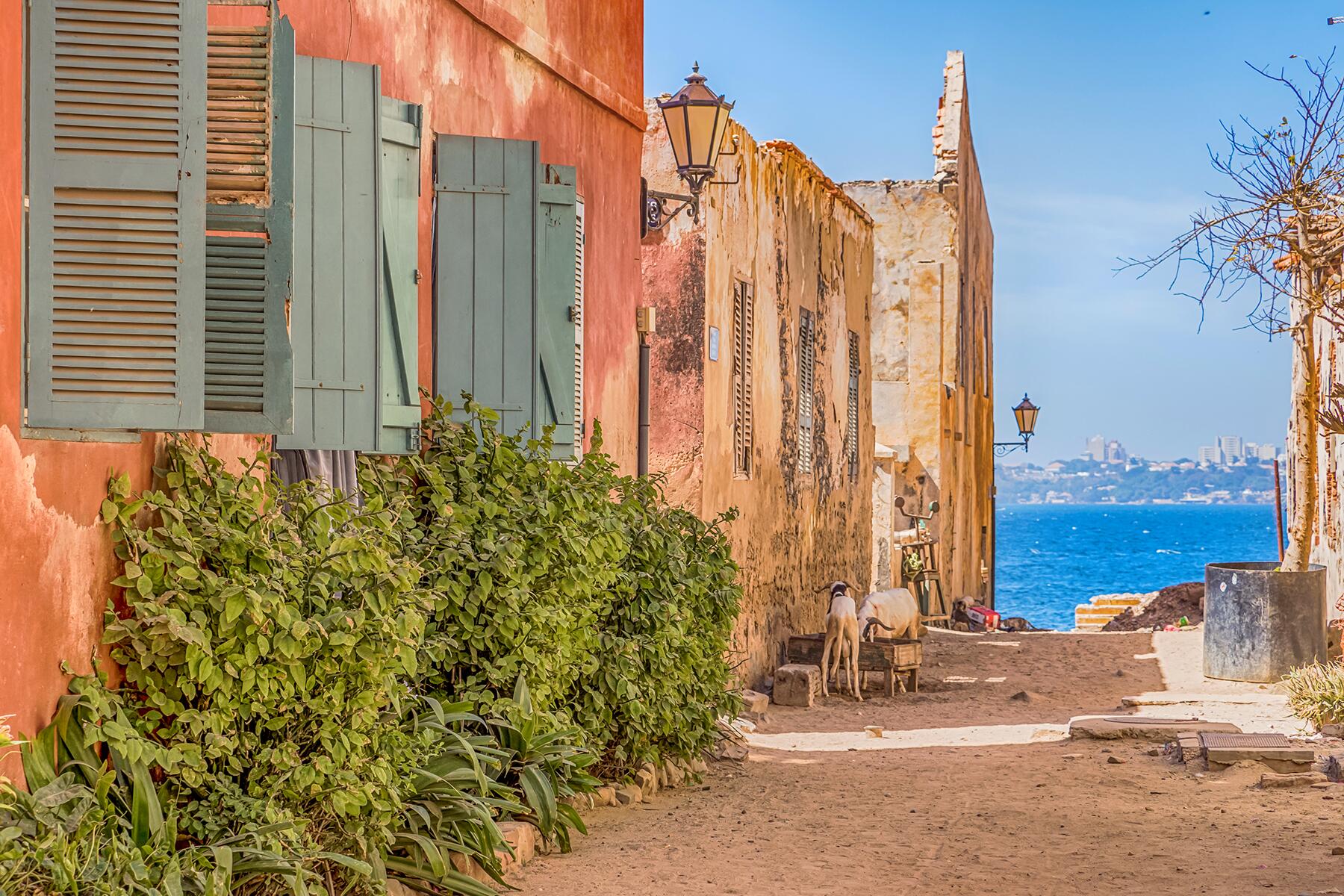
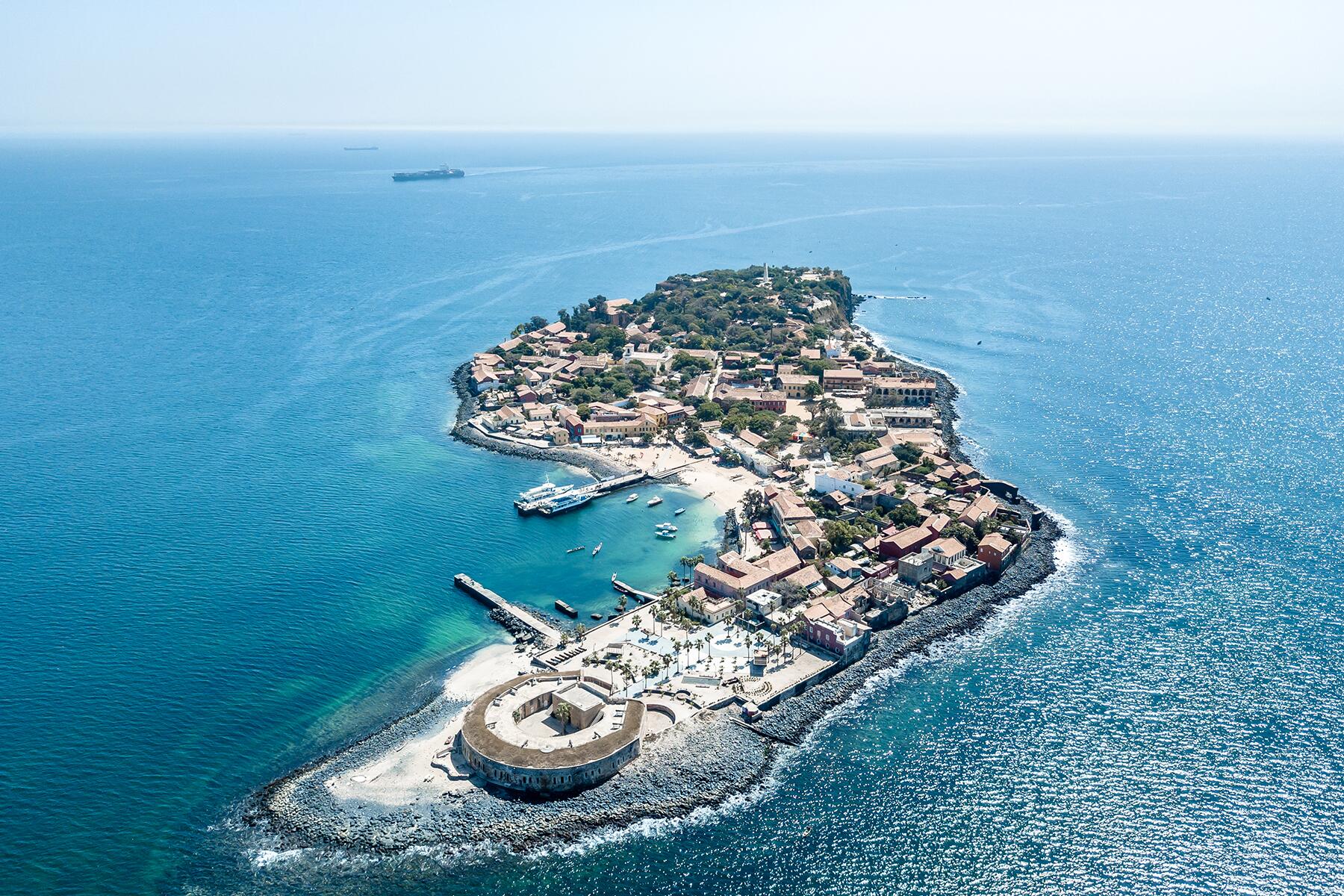
Gorée
Senegal
Now a UNESCO World Heritage Site, Gorée Island serves as both a reminder of the cruelty of the past and a reminder of our collective responsibility to guard and protect individual liberty and the rights of communities to live as they choose.
Half a million people visit Gorée Island every year to learn about its role in the trans-Atlantic slave trade. It was here that millions of enslaved Africans were forcibly brought and chained to be shipped to work in chattel-slavery plantations across the Americas.
To help tell the story of its dark history, every one of its roughly 2,000 inhabitants is a link in the chain. Producing art, song, tools, jewelry, and monuments, the people of Gorée and their artisans serve as a living memory of Gorée’s unique place in world history.
Beyond the artisanship, stories of history can be found in the House of Slaves, a museum and memorial dedicated to the victims of the Atlantic slave trade, and inside the IFAN Historical Museum, which commemorates Senegal’s history in stages, from ancient times up to the country’s independence in 1960.
There are affordable places to stay in some of the restored houses on Gorée Island, but you won’t find high-end luxury hotels here. Both Chez Eric and Chez Coumbis are comfortable and provide easy access to see the island.
The best time to visit Gorée Island is between November and May during the dry season.
Insider Tip
Visitors can stay in Dakar and take the 20-minute ferry to Gorée Island.

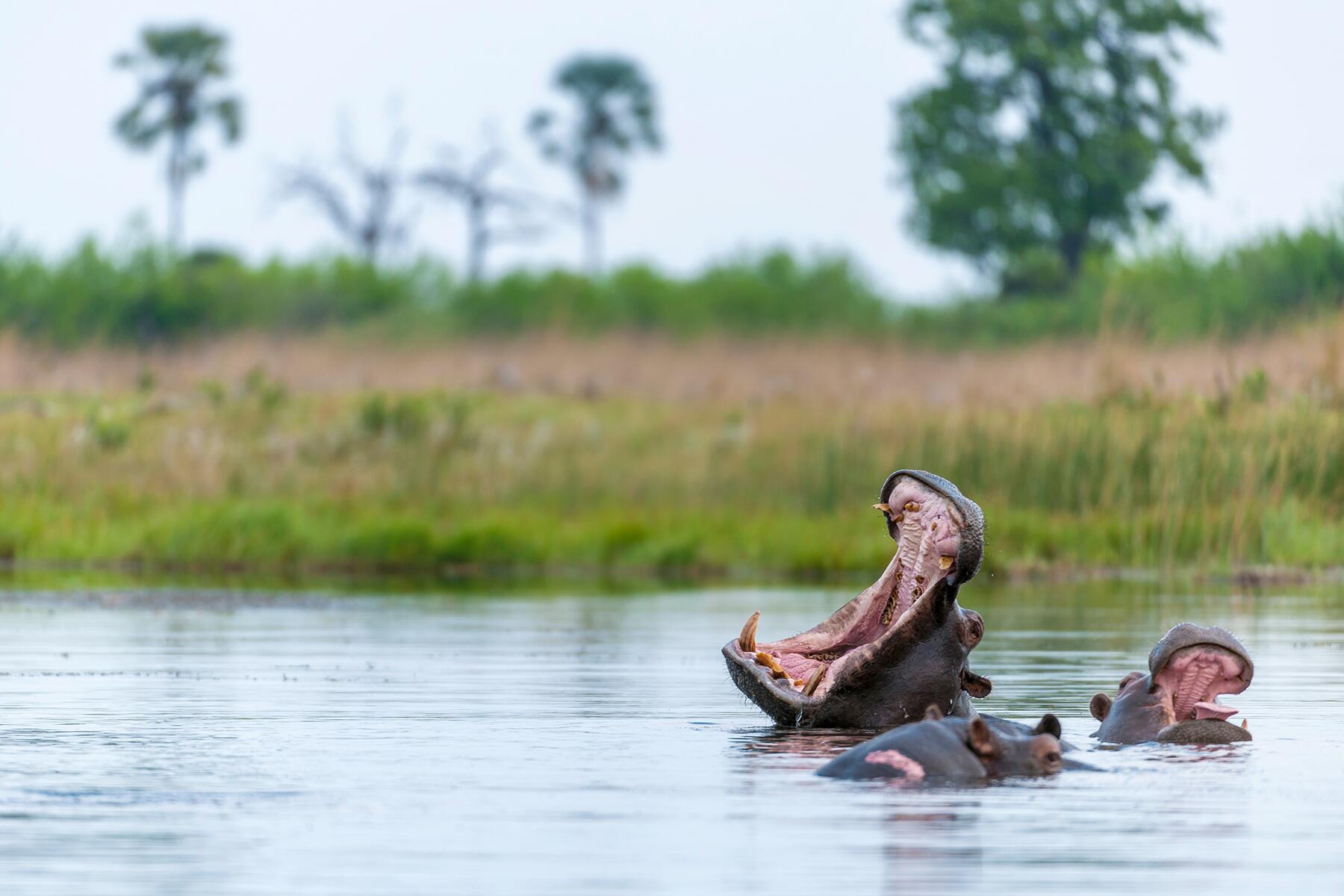
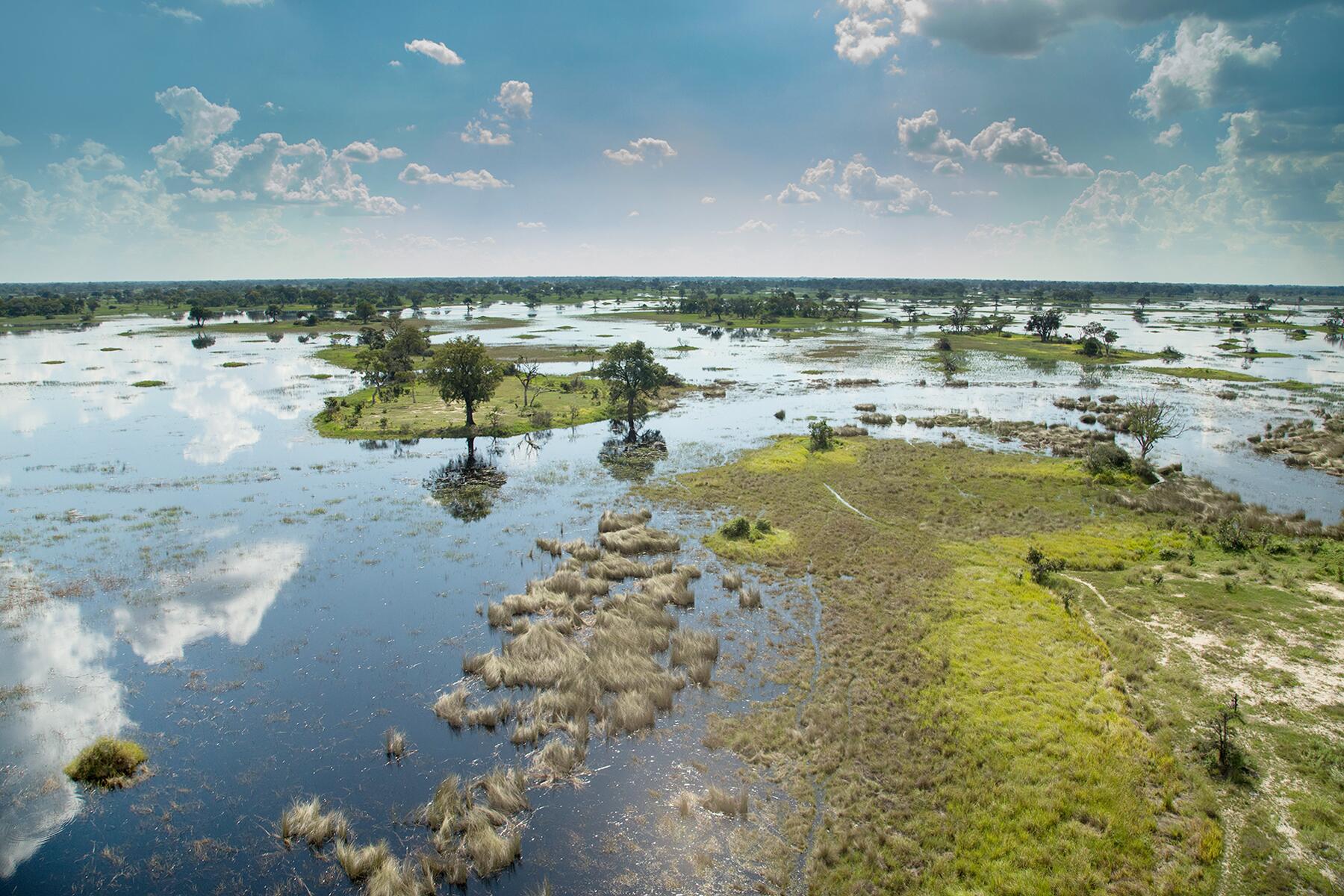
The Okavango Delta
The Okavango Delta
Okavango Delta, with its inland river delta giving way to glass-like lagoons, dense forests, and vast savannahs, is, quite simply, a wondrous place.
As a wildlife sanctuary in the desert, the Okavango Delta hosts herds of the Big Five mammals (the lion, leopard, rhino, elephant, and African buffalo), as well as other impressive creatures, including giraffes, zebras, hippos, and gazelles. It’s also home to more than 400 bird species, and, if you’re lucky, you might spot a cheetah, too. Safari goers may also witness white and black rhinoceros in their natural environment, or spot the African wild dog on game rides.
Recognized as a UNESCO World Heritage Site in 2014, the Okavango Delta in northwest Botswana covers some 7,700 square miles. Seasonal flooding during the June-July dry period is a head-scratching phenomenon and one that’s resulted in conservation efforts as well as tourist interest.
Visitors to this thrilling region discover ever-transforming natural landscapes as you picnic in the wild and join exhilarating safari drives where sightings of hippos and elephants splashing in the clear waters of the Okavango River are part of the adventure.
A holiday at Okavango Delta is comfortable and inviting, thanks to splendidly luxurious and eco-friendly accommodations with amenities like swimming pools and outdoor showers. Private concessions under the Okavango Delta lodges and camps are thoughtfully designed camps, promising panoramic views of the natural wonderland. Moremi Safari Lodges is another option that gets high grades for hospitality.
Although a year-round destination, visiting between June and July means witnessing the aforementioned flooding phenomenon.
Insider Tip
The weather is generally warm and pleasing, and lightweight clothing in neutral or camouflage tones is all that’s needed. Pack your best safari tools like binoculars for birding and animal watching.



São Tomé and Príncipe
Rainforests and jungles, beaches and waterfalls, Pico de São Tomé volcano, and swaths of land dedicated to cocoa and coffee characterize this Central African country. Escape alone or enjoy time with a partner or friends away from the prying eyes of other tourists (the two islands receive fewer than 40,000 visitors a year).
São Tomé is the larger of the two islands. The capital São Tomé City has a lively but relaxed urban scene. Fresh seafood, tropical fruits, and dishes seasoned with coffee are prominent across the islands; check out Casa Museu Almada Negreiros for excellent regional fare with a view. Also worth a detour are the Claudio Corallo Chocolate Factory, Baía das Agulhas (the Bay of Spires), and the São Sebastião Museum, a fortress built by the Portuguese in 1566.
The smaller island, Príncipe, has a population of about 8,000 people and is unsurprisingly laidback. Home to endemic bird species such as the Príncipe kingfisher, the Príncipe sunbird, the Príncipe weaver, and the Príncipe thrush, Príncipe appeals to nature lovers eager to explore this UNESCO biodiversity site.
The people, a culturally diverse mix of African, Portuguese, and Creole, take great pride in their free, democratic, and stable way of life, which has had a significant influence on the region across the arts. Samba, the lively dance with origins in the Congo and Angola, and puita, both the name of a dance and the large drum used for it, are an important part of the local culture to this day.
Visitors can choose to stay by the sea, deep forest lodges, or in the city if they want a taste of São Tomé’s vibrant nightlife. You can easily find accommodation on Airbnb. The Omali Hotel is a good place to start exploring São Tomé’s history and culture through experiences like The Cacao Route, a four-hour tree-to-table experience.
These islands on the Gulf of Guinea don’t have extreme weather, so the best time to visit really depends on the activities you’re interested in like surfing, hiking or scuba diving. The most popular times to visit are the typical holiday months of December to January and July to August.
Insider Tip
The cost of accommodations varies widely, with $200 a night for a single hotel room and Airbnbs from about $50.

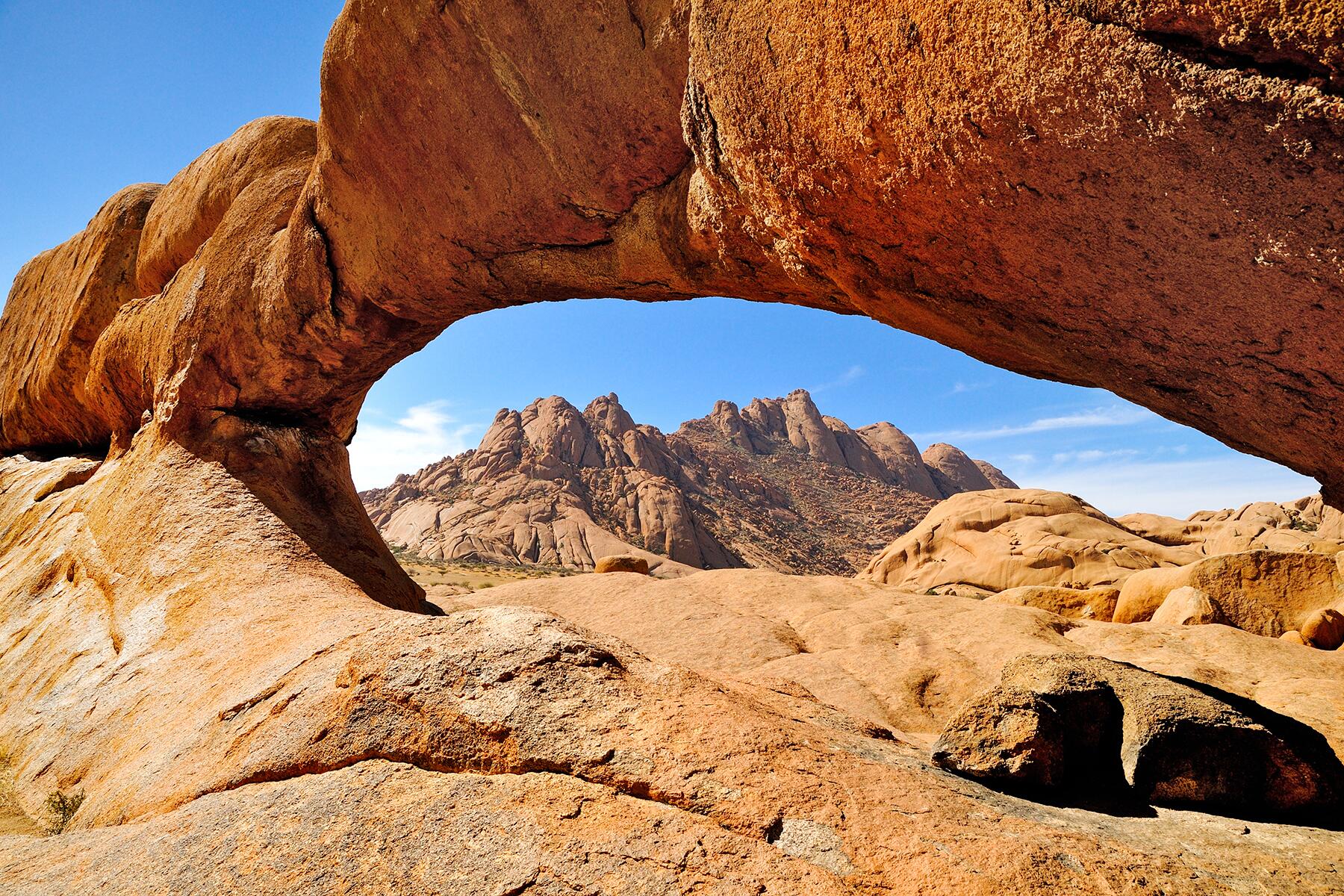
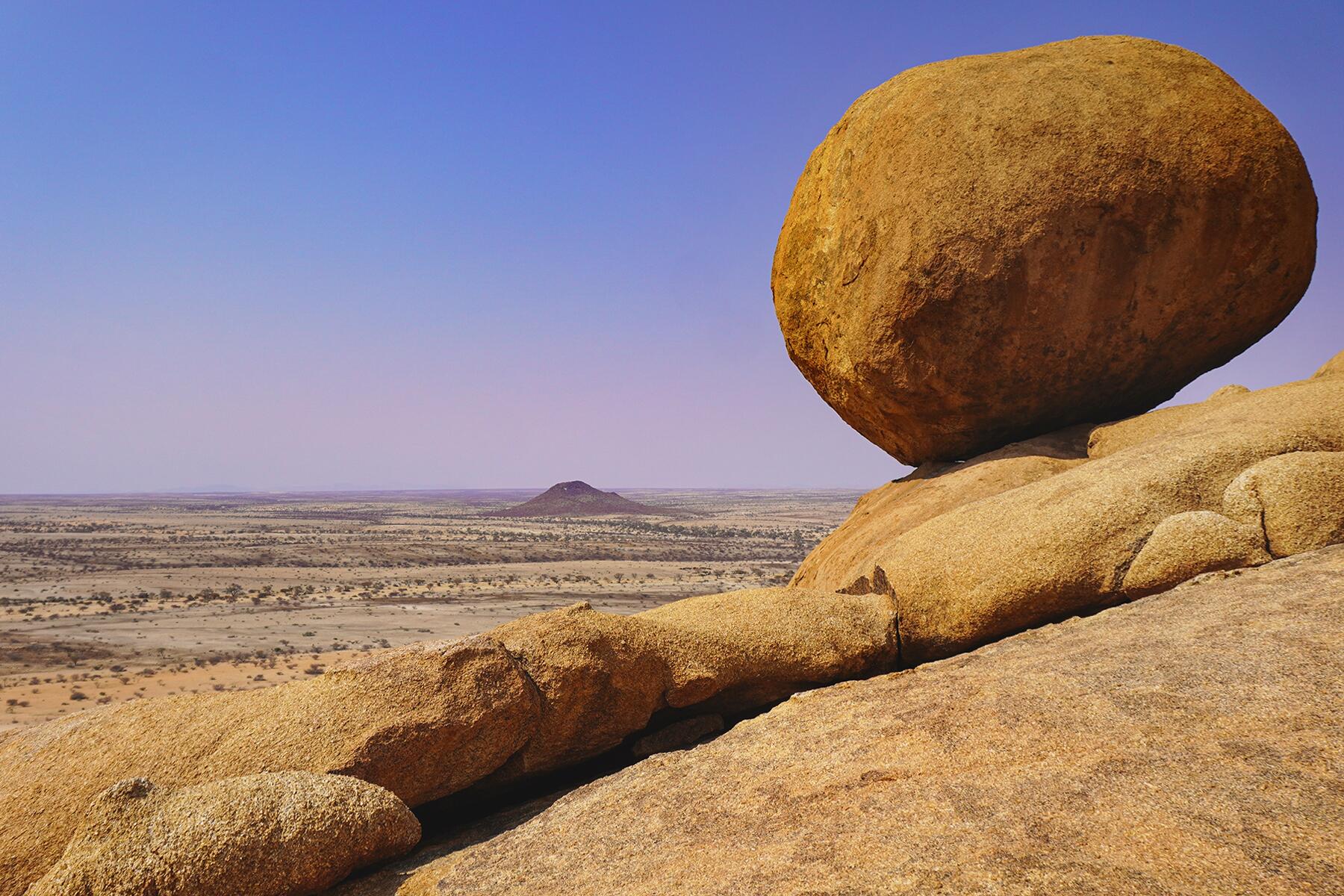
Spitzkoppe
Namibia
Spitzkoppe, a group of bald granite peaks in the Namib desert, is where the adventure begins in Namibia, the southwest African country along the Atlantic Ocean. Translated from the German language, Spitzkoppe means “pointed dome”—an apt description for the isolated mountain oasis known for its extraordinarily oversized boulders and secret caves. The picturesque Spitzkoppe dates back 700 million years, and its serene desert setting offers comfort to visitors searching for peace and relative solitude. Located 174 miles (about three hours by car) from Namibia’s capital Windhoek, it’s an alluring destination for many an intrepid traveler.
Spitzkoppe’s volcanic landscape—dramatically towering inselbergs or isolated rock hills, contrasted against surrounding flat plains—makes clear why it’s often referred to as the Matterhorn of Namibia. Unsurprisingly, hiking is popular here, and visitors can choose from moderate to more arduous trekking with guides at the ready to assist.
Any climb is worth it for the ethereal views, depicted in Stanley Kubrick’s 2001: A Space Odyssey.
Erecting tents at the base of Spitzkoppe used to be a DIY affair reserved for the most hardcore adventurers, but today, travelers will find basic campsites. Tents and rustic huts can be rented as well via such outfits as Spitzkoppe Tented Camp and Campsites, and Spitzkoppe Campsites.
In addition to the more bare-bone digs, deluxe tented facilities like Spitzkoppe Lodge offer eco-friendly tented accommodations accompanied by panoramic viewing decks and complete with a crisp pool to cool off in the desert heat.
Spitzkoppe is a year-round destination with average temperatures ranging from 76°F to 52°F. Its six-month summer runs from October-March and makes hiking unbearable due to the extreme heat. More thrilling outdoor funfairs during the camping include sunset cycling, exploring caves and bushman art, and lighting campfires. Other adventures are birding, stargazing, and sighting desert wildlife like mountain zebras, aardwolf, Oryx, bat-eared foxes, spotted or brown hyenas, caracals, and leopards.
Insider Tip
Hiking parts of Spitzkoppe is great for beginners, but ultimately conquering the tallest peak is a tough challenge for even professional hikers. Pack your best hiking equipment and be prepared.

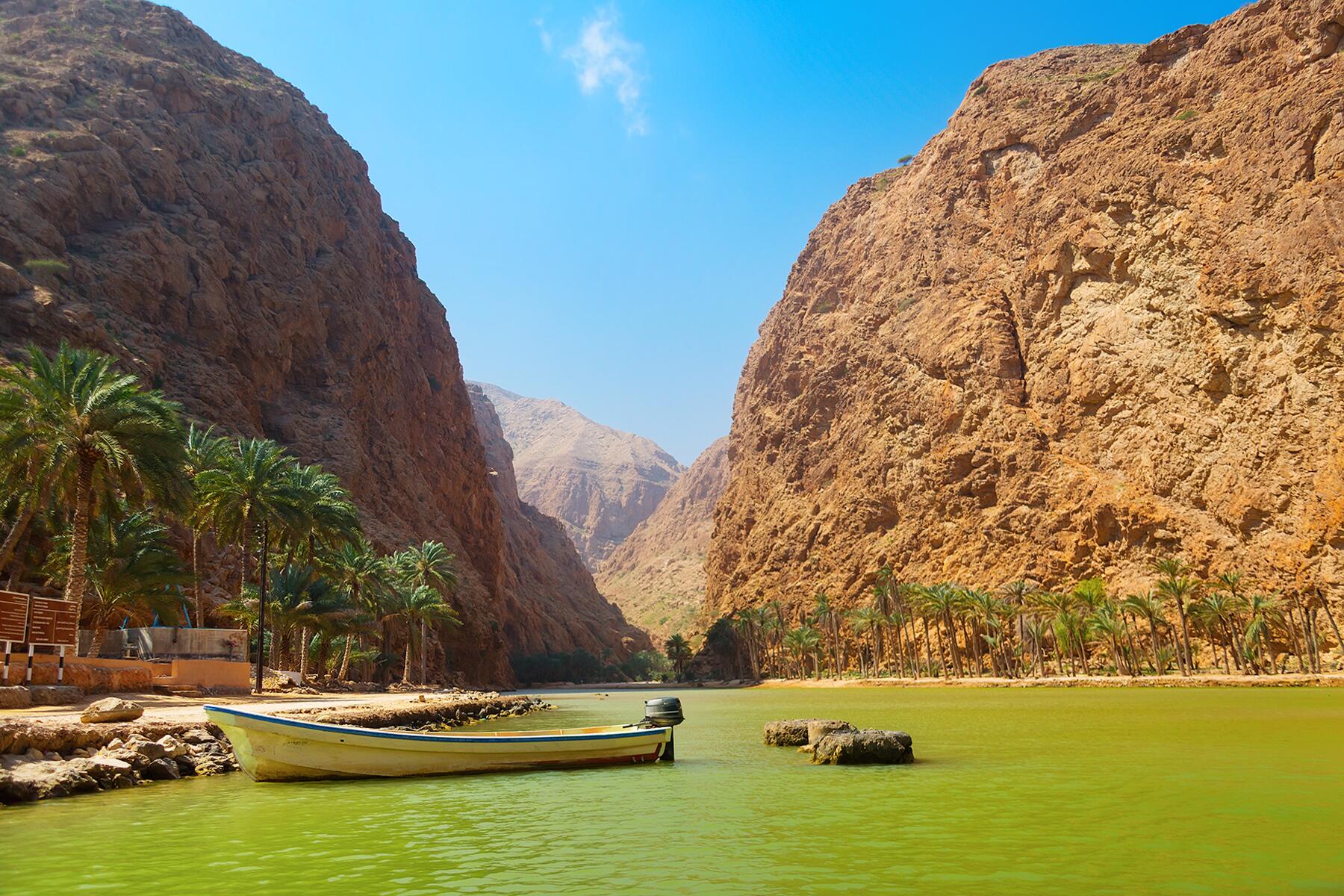
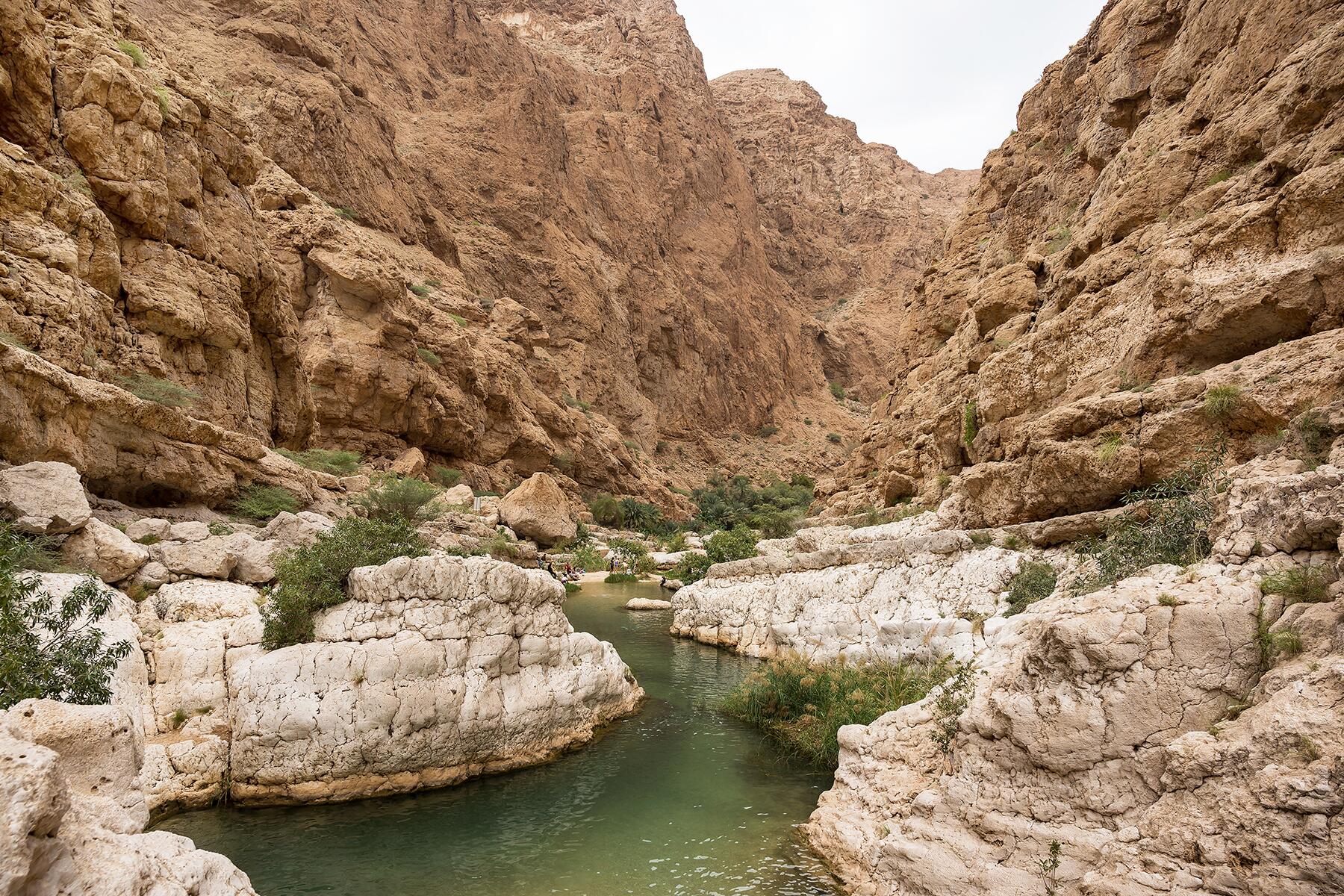
Wadi Shab
Oman
Thanks to the unfavorable perception of authorities towards mass tourism, Oman’s breathtaking landscapes remain relatively untouched—there’s the dramatic fjords of Musandam, the rolling sand dunes of the silent Rub’ Al Khali desert, and the many secrets of the mystical Majlis al Jinn cave chamber. Most of the country’s residents, however, prefer to escape to its scenic wadis. And rightfully so. These generally dry valleys (save for the rainy season) provide shade, offer cooler temperatures, and produce fruits such as dates and bananas.
Wadi Shab is especially popular as warm turquoise waters stay in place all year round. Your journey will begin with a very short boat ride across a rather wide river to arrive at the base of the Wadi Shab hike. Incidentally, this 3.5-mile hike is moderate (not easy), but don’t let that deter you. Proper footwear will keep you safe as you sporadically climb over boulders, walk along narrow canyon walls, and take in the spectacular views. About 40 minutes into your hike, you’ll arrive at the first of three natural pools. The second pool may or may not be dry (depending on the season), while the third pool is the longest and the deepest. As for the confident swimmers out there? A narrow gap between two big rocks at the very end of the third pool beckons, leading to a waterfall inside a large cave that few are privy to.
Because Wadi Shab is about an hour-long drive from Oman’s capital, Muscat, your Omani adventure can be accompanied by a side of luxury as the JW Marriott Muscat, Avani Muscat, and Royal Tulip Muscat have all recently made their debut. And if you’d rather save than splurge, the no-frills yet charming Wadi Shab Guesthouse is the one to beat. Between its super attentive host and the beach at your doorstep, R&R is guaranteed.
Considering most of Oman is desert, a visit during winter will make for a much more pleasant hike to the wadi.
Insider Tip
A parking lot aside, the area is devoid of amenities, so be sure to pack some snacks, a bottle of water, a waterproof bag for your belongings, and a pair of water shoes.

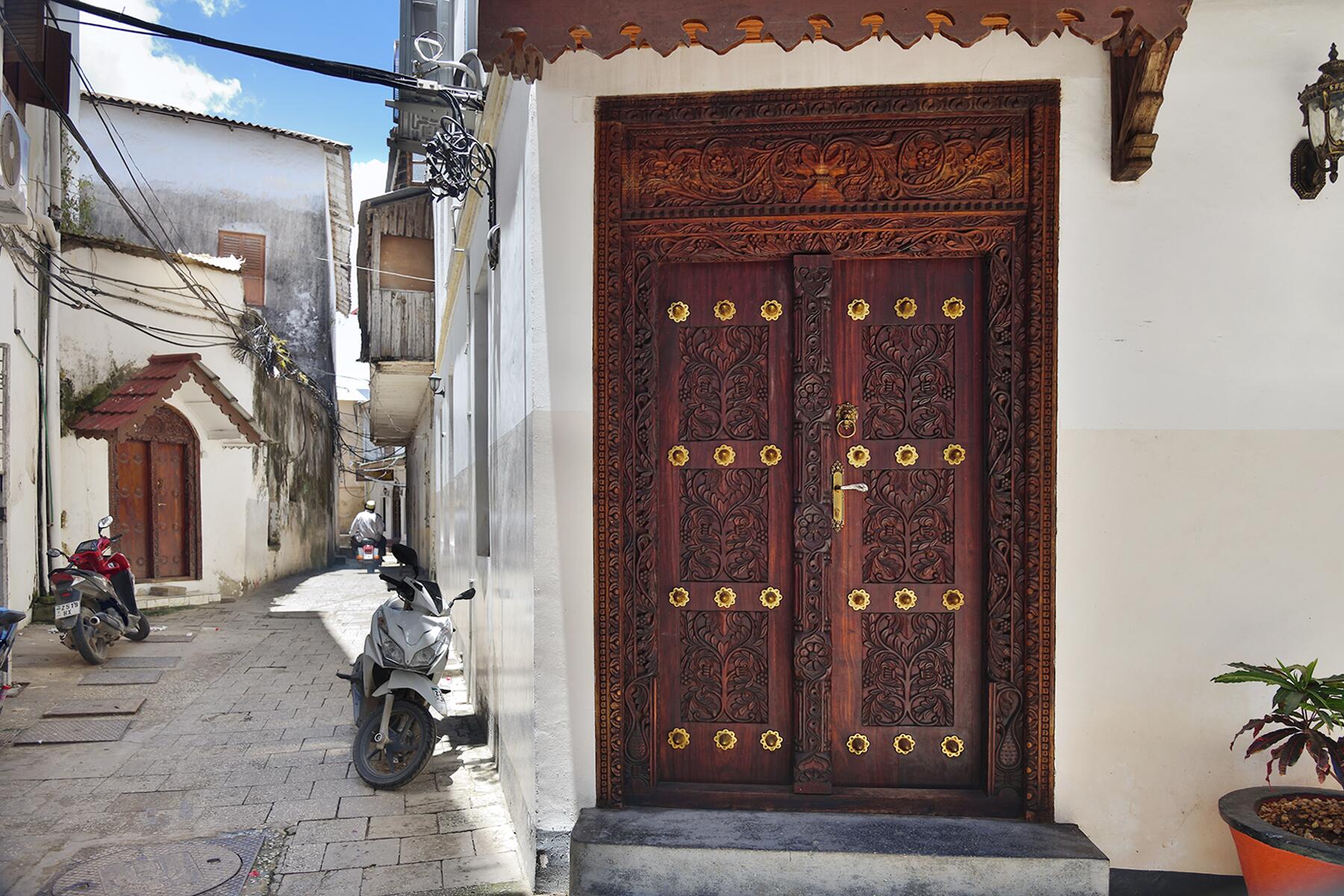
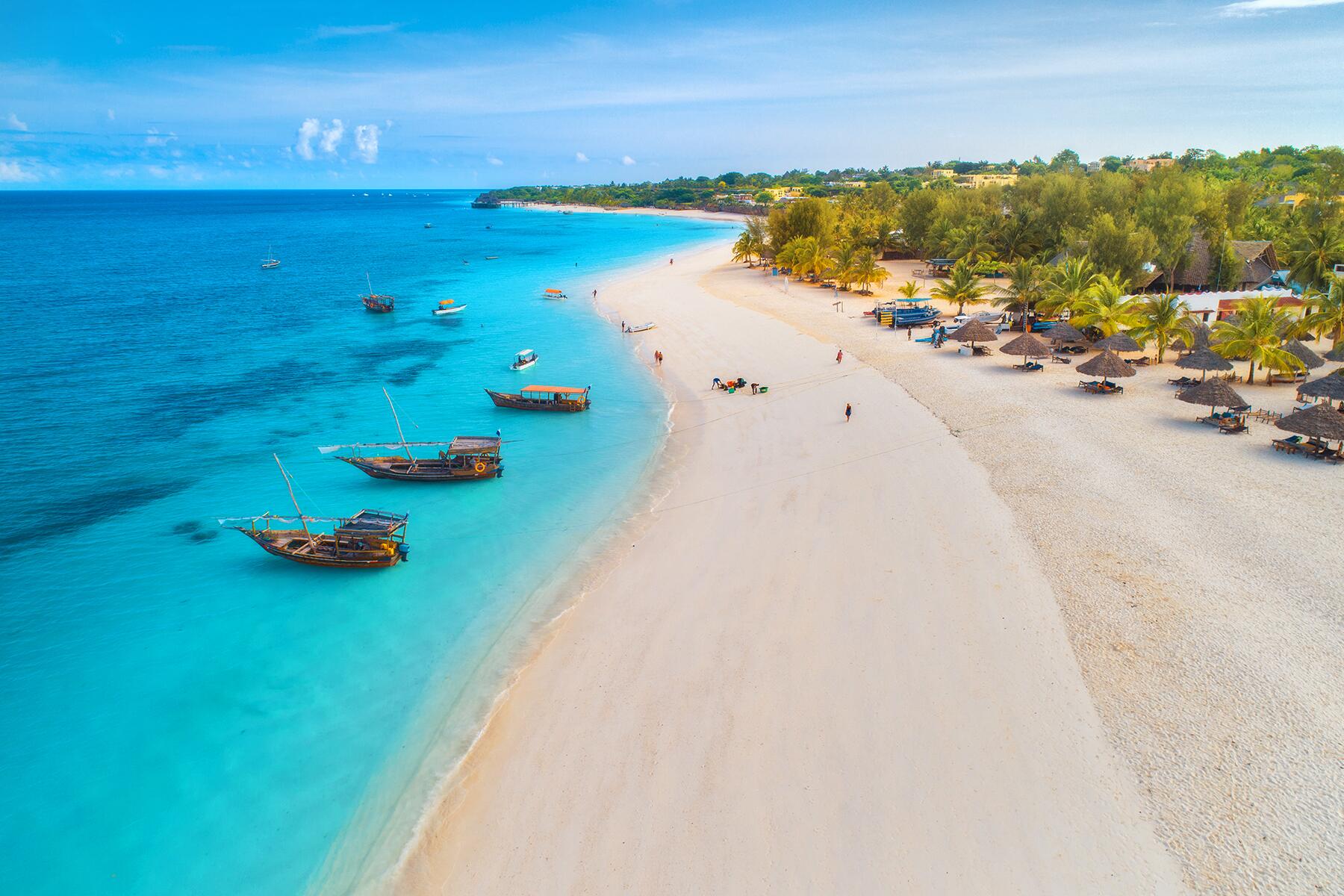
Zanzibar
Tanzania
Becoming one of the most popular travel destinations in Africa, Zanzibar has risen to prominence since the pandemic began—and for good reason. It’s an oasis on the Indian Ocean heralding pristine white beaches, it’s home to thick luscious forests, and it boasts an abundance of marine wildlife. In other words: it’s a perfect tropical paradise.
This archipelago is a getaway gem; the history-loving old soul and the adventurous beach bum will definitely enjoy Zanzibar. This is one of the most unique travel destinations in Africa, with an array of activities to suit all types of travelers. Embark on a nature trail in Jozani Forest and marvel at Zanzibar Red Colobus Monkeys, stroll in Stone Town to learn the layered history of the island, and swim with turtles at Baraka Aquarium.
Zanzibar caters as much to the solo fun-loving thrill seeker as to the family in need of a tropical vacation. The tropical paradise’s abundance of idyllic islands, beautiful beaches, cultural centers, and delicious Swahili cuisine are all part of the appeal.
Zanzibar offers a brand new luxurious and exclusive hotel that is synonymous with the island’s reputation of class and prestige. If you’d like to immerse yourself in opulence, visit the newest hotel in town, the Emerald Zanzibar Resort & Spa, set to open in December 2022.
The best time to visit Zanzibar is during the dry season (January to March). This is also the low season when prices are cheaper and it’s less crowded.
Insider Tip
As 90% of the Zanzibari population is Muslim, you should sometimes dress with modesty.













